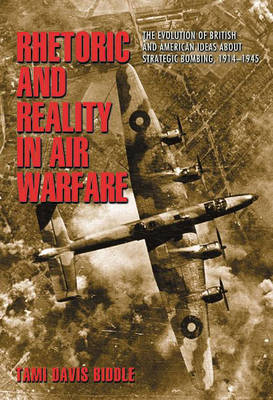A revision of our understanding of long-range bombing, this book examines how Anglo-American ideas about "strategic" bombing were formed and implemented. It argues that the ideas about bombing civilian targets rested on - and gained validity from - widespread but erroneous assumptions about the nature of modern industrial societies and their vulrability to aerial bombardment. These assumptions were derived from the social and political context of the day and maintained largely through cognitive error and bias. Tami Davis Biddle analyses how a particluar interpretation of World War I experience, together with airmen's organizational interests, shaped interwar debates about strategic bombing and preserved conceptions of its potenitally revolutionary character. This flawed interpretation as well as failure to anticipate implementation problems, were revealed as World War II commenced. By then, British and Americans had invested heavily in strategic bombing. They saw little choice but to try and solve the problems in real time and make long-range bombing as effective as possible.
Combining narrative with analysis, this book presents a comparative history of British and American strateg
- ISBN10 0691089094
- ISBN13 9780691089096
- Publish Date 17 February 2002 (first published 15 February 2001)
- Publish Status Out of Print
- Out of Print 16 January 2011
- Publish Country US
- Imprint Princeton University Press
- Format Hardcover
- Pages 416
- Language English
- URL https://press.princeton.edu/titles/7286.html
